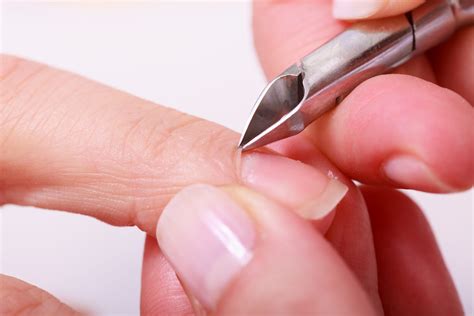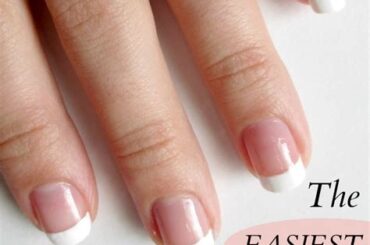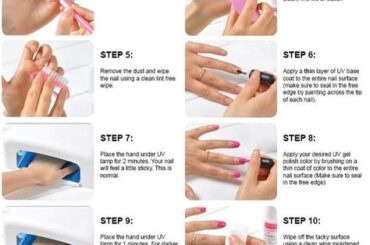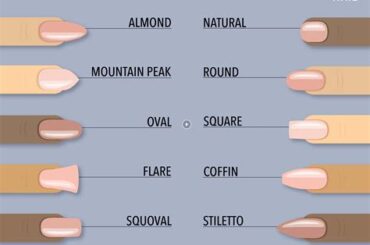Discover the anatomy, functions and myths of cuticles. Learn effective care techniques, impact of diet, treatments, natural remedies, and maintenance for healthy nails.
Anatomy of the Cuticle
The cuticle is the thin layer of skin that covers the base of the nail. It is made up of dead skin cells and provides protection to the nail bed. The cuticle is composed of three key layers: the eponychium, the perionychium, and the hyponychium. The eponychium is the living tissue that extends over the base of the nail, while the perionychium is the skin that surrounds the sides of the nail. The hyponychium is the area under the free edge of the nail, where the skin meets the nail plate.
Understanding the anatomy of the cuticle is important for proper cuticle care and maintenance. Knowing the different layers and their functions can help individuals better address issues such as dry, overgrown, or damaged cuticles. By recognizing the role of each part of the cuticle, individuals can take steps to maintain healthy and attractive nails.
In addition to providing protection, the cuticle also plays a role in preventing infections and maintaining the overall health of the nail. It acts as a barrier, keeping out bacteria, fungi, and other harmful substances that can lead to infections or inflammation. Therefore, proper cuticle care is essential not only for the appearance of the nails but also for their overall health and well-being.
Functions and Importance
The cuticle is a crucial part of the nail’s structure, serving several important functions in maintaining the health and appearance of the nails. It acts as a barrier, protecting the nail bed from bacteria, fungus, and other infections. Additionally, the cuticle helps to seal in moisture, preventing the nails from becoming dry and brittle. Without a healthy cuticle, the nails are more susceptible to damage and breakage.
It’s important to recognize the importance of proper cuticle care in maintaining overall nail health. Neglecting the cuticles can lead to a host of issues, including hangnails, dryness, and inflammation. By prioritizing cuticle care, individuals can promote strong, healthy nails and avoid the discomfort associated with neglected cuticles.
Understanding the functions and importance of the cuticle can empower individuals to take proactive steps to care for their nails. By incorporating regular moisturization, gentle pushing back of the cuticles, and avoiding harsh chemicals, individuals can maintain the integrity of their cuticles and contribute to overall nail health. With proper care, the cuticles can fulfill their essential functions and contribute to the beauty and strength of the nails.
Common Cuticle Myths
The Science Behind Cuticle Care: Facts and Myths
One common myth about cuticles is that they should be cut or trimmed regularly to maintain healthy nails. In reality, cutting the cuticles can actually lead to infections and damage to the nail bed. The cuticle serves as a protective barrier for the nail, so it’s important to keep it intact to prevent bacteria and fungus from entering.
Another misconception is that pushing back the cuticles will make the nails look longer. This practice can actually cause trauma to the nail matrix, leading to slower nail growth and potentially damaging the nail. Instead, it’s best to gently push back the cuticles after soaking the nails to promote healthy nail growth.
Many people also believe that applying nail polish or cuticle oil can repair damaged cuticles. While these products can help to moisturize and protect the cuticles, they cannot reverse existing damage. It’s important to practice good cuticle care habits, such as regular moisturizing and avoiding harsh chemicals, to prevent damage in the first place.
Effective Cuticle Care Techniques
Having healthy and well-maintained cuticles is an essential part of overall nail care. Effective cuticle care techniques not only contribute to the appearance of your nails, but they also play a crucial role in preventing infections and promoting nail growth. When it comes to maintaining your cuticles, it’s important to remember that gentleness is key. Avoid using harsh tools or rough handling that can cause damage or inflammation to the delicate cuticle area.
One of the most effective cuticle care techniques is regular moisturization. Applying a nourishing cuticle oil or cream daily helps to keep the cuticles supple and hydrated, preventing dryness and cracking. Additionally, massaging the oil or cream into the cuticles can stimulate blood flow and promote healthy nail growth.
Finally, another important technique for effective cuticle care is regular trimming and maintenance. However, it’s crucial to only trim loose or overgrown cuticles, as cutting into healthy cuticle tissue can lead to infection and damage. Using a softening agent or warm water to gently push back the cuticles before trimming can make the process safer and more effective.
Impact of Diet and Hydration
The Science Behind Cuticle Care: Facts and Myths
Many people don’t realize that the health of their cuticles can be greatly affected by their diet and hydration levels. The foods we eat and the amount of water we drink have a significant impact on the condition of our cuticles. A diet rich in essential nutrients, such as vitamins A, C, and E, as well as biotin and omega-3 fatty acids, can promote healthy cuticle growth and prevent dryness and brittleness.
On the other hand, dehydration can lead to dull, dry, and cracked cuticles. When the body is not adequately hydrated, the nails and cuticles are often the first areas to show signs of dehydration. Drinking plenty of water throughout the day is essential for maintaining the moisture balance in the cuticles and preventing them from becoming parched.
In addition to diet and hydration, certain lifestyle habits can also impact the health of the cuticles. For example, excessive alcohol consumption and smoking can dehydrate the body and lead to weakened cuticles. It’s important to be mindful of these factors and make healthier choices to support the overall well-being of the cuticles.
Understanding Cuticle Disorders
The cuticle is a crucial part of the nail that serves as a protective barrier, preventing bacteria and fungi from entering the nail bed. However, there are instances when the cuticle can develop disorders, leading to various nail problems. Cuticle disorders can manifest in different ways, such as dry, cracked, or inflamed cuticles, and can be caused by a variety of factors including genetics, improper nail care, and underlying health conditions.
One common cuticle disorder is known as paronychia, which occurs when the cuticle becomes inflamed and swollen. This can be caused by bacterial or fungal infections, trauma to the nail, or prolonged exposure to water. Another disorder is onychocryptosis, more commonly known as an ingrown nail, where the cuticle grows into the surrounding skin, leading to pain and possible infection. Understanding these disorders is important in order to properly care for the cuticles and prevent further complications.
It’s important to note that cuticle disorders should not be ignored, as they can lead to more serious nail problems if left untreated. Seeking professional help and following proper nail care routines can help alleviate and prevent these disorders. Additionally, maintaining proper hydration and nutrition can also play a key role in keeping the cuticles and nails healthy.
Professional Cuticle Treatments
The Science Behind Cuticle Care: Facts and Myths
When it comes to taking care of your nails, professional cuticle treatments can make a world of difference. Cuticles play a vital role in protecting the nail bed from infection and damage, but they can also be prone to dryness and damage themselves. This is where professional treatments come in, offering a range of specialized services to keep your cuticles healthy and looking their best.
One common professional treatment for cuticles is the use of cuticle remover solutions, which are designed to soften the cuticles and make them easier to push back and trim. This can help to prevent the buildup of dead skin and reduce the risk of hangnails. Additionally, professional manicurists may use special moisturizing treatments and oils to nourish and hydrate the cuticles, promoting overall nail health and growth.
Another popular option for professional cuticle care is paraffin wax treatments, which involve dipping the hands in warm, melted paraffin wax to lock in moisture and nourishment. This can be particularly beneficial for those with severely dry and damaged cuticles, as the wax creates a protective barrier and helps to soothe and heal the skin. Overall, professional cuticle treatments offer a range of specialized solutions to address individual cuticle concerns and promote healthier, stronger nails.
Natural Remedies vs. Commercial Products
The Science Behind Cuticle Care: Facts and Myths
In the world of cuticle care, there is a constant debate between natural remedies and commercial products. Many people swear by the effectiveness of natural ingredients such as coconut oil, shea butter, and essential oils for keeping their cuticles healthy and moisturized. On the other hand, commercial cuticle creams and oils are formulated with advanced technology and scientific research to target specific cuticle concerns.
It’s important to understand that the choice between natural remedies and commercial products ultimately depends on individual preferences and the specific needs of the cuticles. Some individuals may prefer the simplicity and purity of natural remedies, while others may opt for the convenience and targeted benefits of commercial products. Both options have their merits and drawbacks, and it’s essential to weigh these factors when deciding on a cuticle care regimen.
Furthermore, it’s crucial to differentiate between myths and facts when it comes to natural remedies and commercial products for cuticle care. While some natural ingredients may have proven benefits for the cuticles, not all natural products are necessarily effective. Similarly, not all commercial products are filled with harmful chemicals as some may claim. It’s important to research and understand the ingredients and their impact on the cuticles before making a decision.
Healthy Nail and Cuticle Maintenance
Healthy nail and cuticle maintenance is an essential part of overall hand and nail care. The cuticles act as a barrier to protect the nails and surrounding skin from infection, so it’s important to keep them healthy and well-maintained. One of the most effective ways to maintain healthy nails and cuticles is to keep them clean and moisturized. Regularly cleaning your nails and cuticles with a mild soap and warm water can help prevent the buildup of dirt and bacteria, while moisturizing with nourishing oils or creams can keep them soft and supple.
Additionally, maintaining a balanced diet and staying hydrated is crucial for healthy nails and cuticles. Foods rich in vitamins and minerals, such as fruits, vegetables, and lean proteins, can promote nail and cuticle health. Drinking plenty of water also helps to keep the nails and cuticles hydrated, preventing dryness and brittleness. Proper nail and cuticle maintenance also includes avoiding harsh chemicals and excessive use of nail products, which can weaken and damage the nails and surrounding skin.
Incorporating regular manicures and nail treatments can also contribute to healthy nail and cuticle maintenance. Professional nail technicians can trim and shape the cuticles, remove dead skin, and apply nourishing oils and creams to promote nail and cuticle health. Natural remedies, such as coconut oil and tea tree oil, can be used to maintain healthy nails and cuticles without the use of harsh chemicals. By incorporating these techniques and practices into your nail care routine, you can maintain strong, healthy nails and cuticles for a beautiful and polished look.
Frequently Asked Questions
What is the purpose of cuticles?
Cuticles help to protect the nail bed from bacteria and infection.
Should cuticles be pushed back or trimmed?
Cuticles should not be cut or trimmed, but gently pushed back to promote healthy nail growth.
Is it necessary to moisturize cuticles?
Yes, moisturizing cuticles regularly can help to prevent dryness and cracking.
Can removing cuticles cause damage to the nail bed?
Yes, removing cuticles can increase the risk of infection and damage to the nail bed.
Are cuticle oils and creams effective in maintaining cuticle health?
Yes, cuticle oils and creams can help to nourish and protect the cuticles from damage.
How often should cuticle care be included in a manicure routine?
Cuticle care should be included in a manicure routine at least once a week to maintain healthy cuticles.
Are there any natural remedies for treating dry cuticles?
Natural remedies such as coconut oil, shea butter, and vitamin E oil can help to moisturize and nourish dry cuticles.





